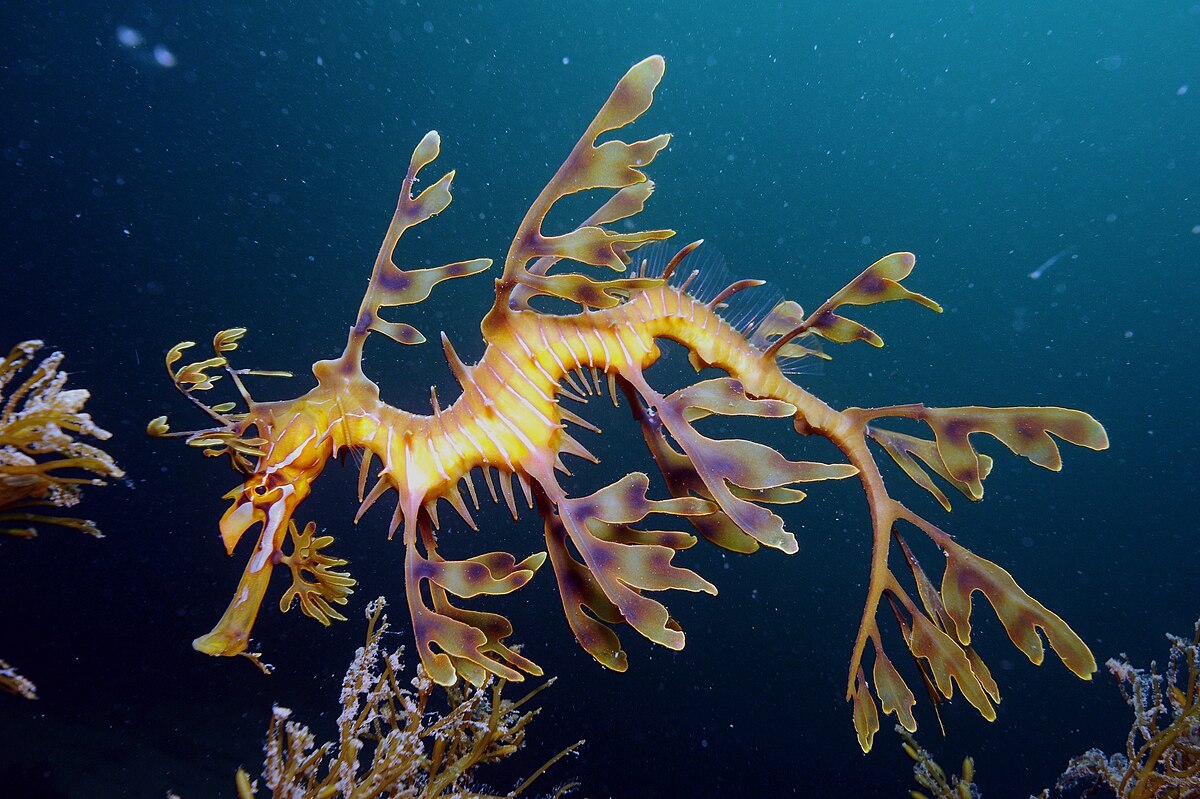
Scientific Name: Phycodrus eques
Family Name: Syngnathidae
IUCN status:Near Threatened
Habitat: Found in southern and western coast
of australia, the Pacific and the Indian oceans
and live in coral reefs
Diet: Carnivore
Life Span: 2 to 10yrs
Height: 35cm(14inches)
Weight: quarter of a pound
What does it eat: Larval fish, small
crustaceans, plankton, mysid shrimp and
amphipods



Description: Leafy Sea Dragons are light
brown or yellow color with long, leaf-shaped
pieces of skin that look green .The body is
covered in protective joined plates instead of
scales and long, sharp spine line in it’s dorsal
edge. Camouflaged with elaborate , ornate
skin filament that hang from the head, body
and tail making it virtually indistinguishable
from the floating seaweed in which it lives.
They are slow-swimmers and with fragile
bodies. They have long, narrow snouts which
are great for slurping up snacks like tiny
shrimp.They depend on camouflage to hide
from predators. Leafy Sea Dragon have the
ability to change colour and can do more
based on the sea dragon’s diet, age, location
and stress level .Their leafy appendages,
ability to change colour to match their
seaweed and seagrass habitats, and ability to
sway like plants in the water current which
helps to protect them from predators.
Leafy Sea Dragon camouflaged


- There are three types of seadragons:
i) Weedy Sea Dragon (Common Sea Dragon)-
Near Threatened
ii) Leafy Sea Dragon- Near Threatened
iii) Ruby Sea Dragon-Data Deficient

- Weedy and Leafy Sea Dragons are seldom
found together - They are extremely delicate marine critters
- They live in 82feet depth
- They are curious creatures
- They are fascinating masters of disguise at
PADI - PADI-Profesional Association for Diving
Instructors - They have small, transparent fins;a dorsal
fin at the back and pectoral fins on the neck
and are classified as vertebrates - They are popularly known as “Leafies”
- Marine emblem of the state of South
Australia - Sea Dragons suck up microorganisms and
small worms with their tube-like snout - The tail of the male leafy sea dragon will turn
bright yellow when he is ready to mate - When a male and a female seadraon come
together to mate, they perform an elaborate
courtship ritualknown as the “mirror dance” - The “mirror dance” usually takes place in the
evening fade light - Instead of a pouch like seahorses have,
male sea dragons have a spongy brood
patch on the under side of the tail where
females deposit their bright-pink eggs during
mating - The eggs are fertilized during the transfer of
eggs from the female to the male